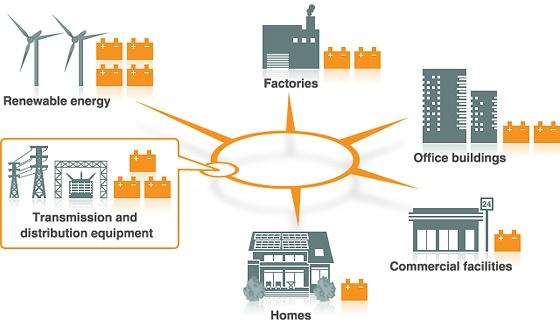
Energy flows all around us, but it's not very beneficial unless it's harnessed, concentrated and distributed in a form useful to those who need it. That's one of the factors that has made distributed solar energy generation increasingly attractive. More powerful and cheaper than ever, photovoltaic (PV) panels are producing ever-greater amounts of pollution-free energy on-site for homes, businesses, government and public facilities in developing and developed countries the world over.
Utility-scale generation accounts for the bulk of installed solar power capacity in the U.S. The lack of transmission and distribution lines has constrained growth. Building those power lines also adds significantly to the time and cost of bringing new utility-scale solar power assets online. The converse is also true. Connecting rapidly growing residential and commercial solar energy systems to the power grid can yield substantial benefits all around – to power distribution companies as well as consumers and “prosumers.”
Yet, for a variety of reasons – including strong opposition on the part of well-entrenched power utilities – connecting distributed, on-site solar energy systems to the grid has proven to be a significant hurdle to wider-scale deployment and use.
Aiming to speed things up, the Department of Energy on Oct. 29 announced it is making $15 million available to promote integration of distributed, on-site solar energy systems into the U.S. electricity grid. Solar energy growth continues to shatter records, DOE notes in a press release, “with more solar power installed in the U.S. in the last 18 months than in 30 years prior.”
Distributed PV plus energy storage
Combined with solar power electricity production, a new generation of energy storage solutions holds out the prospect of resolving the issue of solar energy's variable nature. The $15 million in new DOE funding opportunities “is specifically aimed at supporting projects that enable low-cost, flexible and reliable solutions that successfully integrate solar PV power plants and energy storage,” DOE explains in its news release. The new funding also falls right in line with the goals set out in President Barack Obama's Climate Action Plan, which include mitigating the effects of climate change, as well as helping the U.S. take on a leading role in global solar and renewable energy industries, markets and adoption.
U.S. solar power generation capacity has grown thirteen-fold since President Barack Obama first took office, increasing from 1.2 gigawatts in 2008 to an estimated 15.9 GW today, DOE highlights, “enough to power the equivalent of 3.2 million average American homes.” Combining the fast-growing amount of solar power being generated around the country with new energy storage solutions can help strengthen the reliability and resiliency of the national electricity grid, which, in turn, helps lower operating costs and costs to consumers.
According to DOE, projects eligible to garner a share of the $15 million in new distributed PV-energy storage-for-grid-integration funding include:
- Advanced operation in conjunction with smart loads and demand response;
- Incorporation of solar and load forecasting;
- Innovative uses of smart components and functionalities, and
- Easily interoperable hardware, software and firmware technologies.
More information, including application requirements, is available on a DOE website.
Image credits: 1) DOE; 2) NEC Energy Storage

An experienced, independent journalist, editor and researcher, Andrew has crisscrossed the globe while reporting on sustainability, corporate social responsibility, social and environmental entrepreneurship, renewable energy, energy efficiency and clean technology. He studied geology at CU, Boulder, has an MBA in finance from Pace University, and completed a certificate program in international governance for biodiversity at UN University in Japan.














